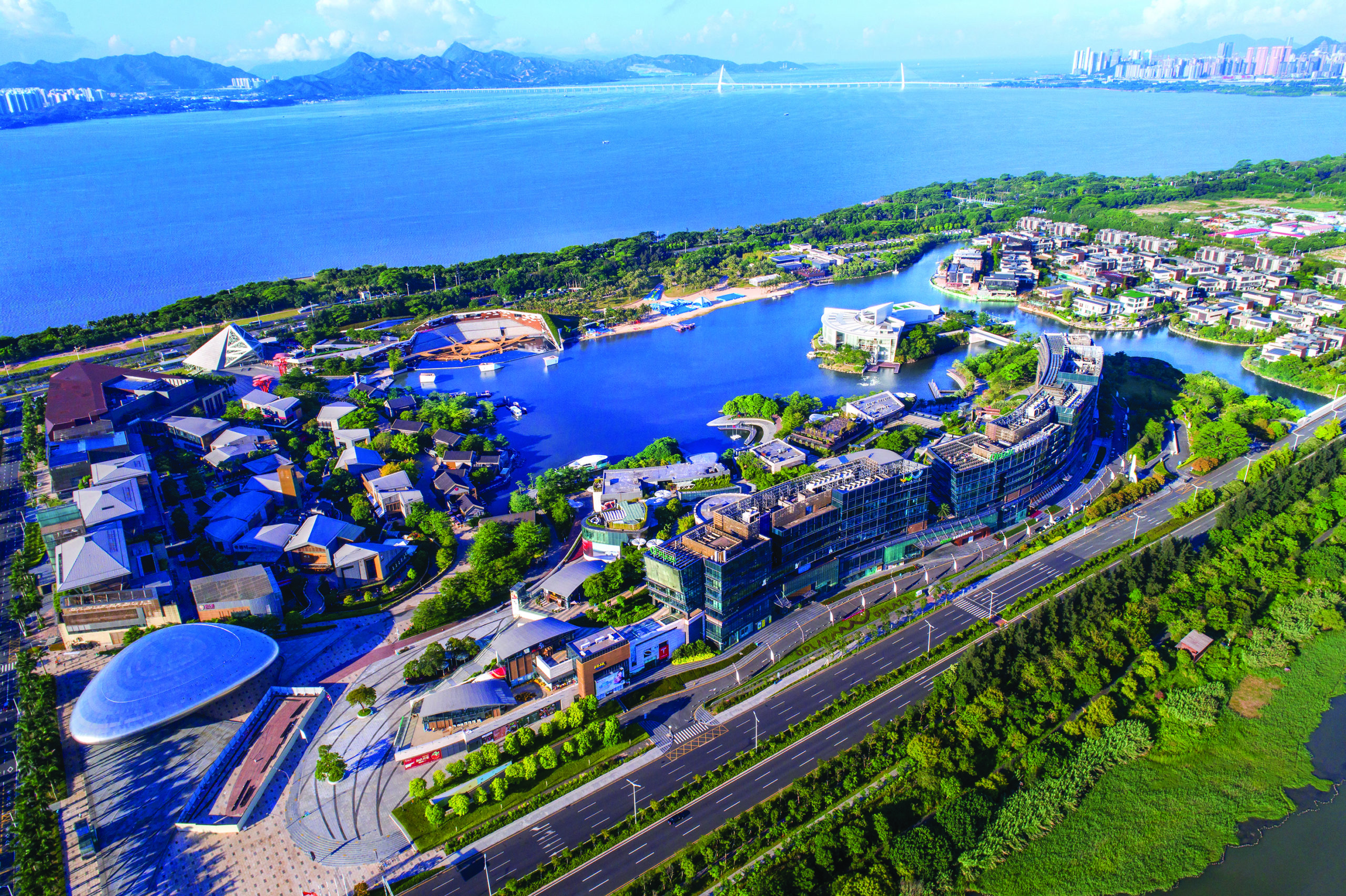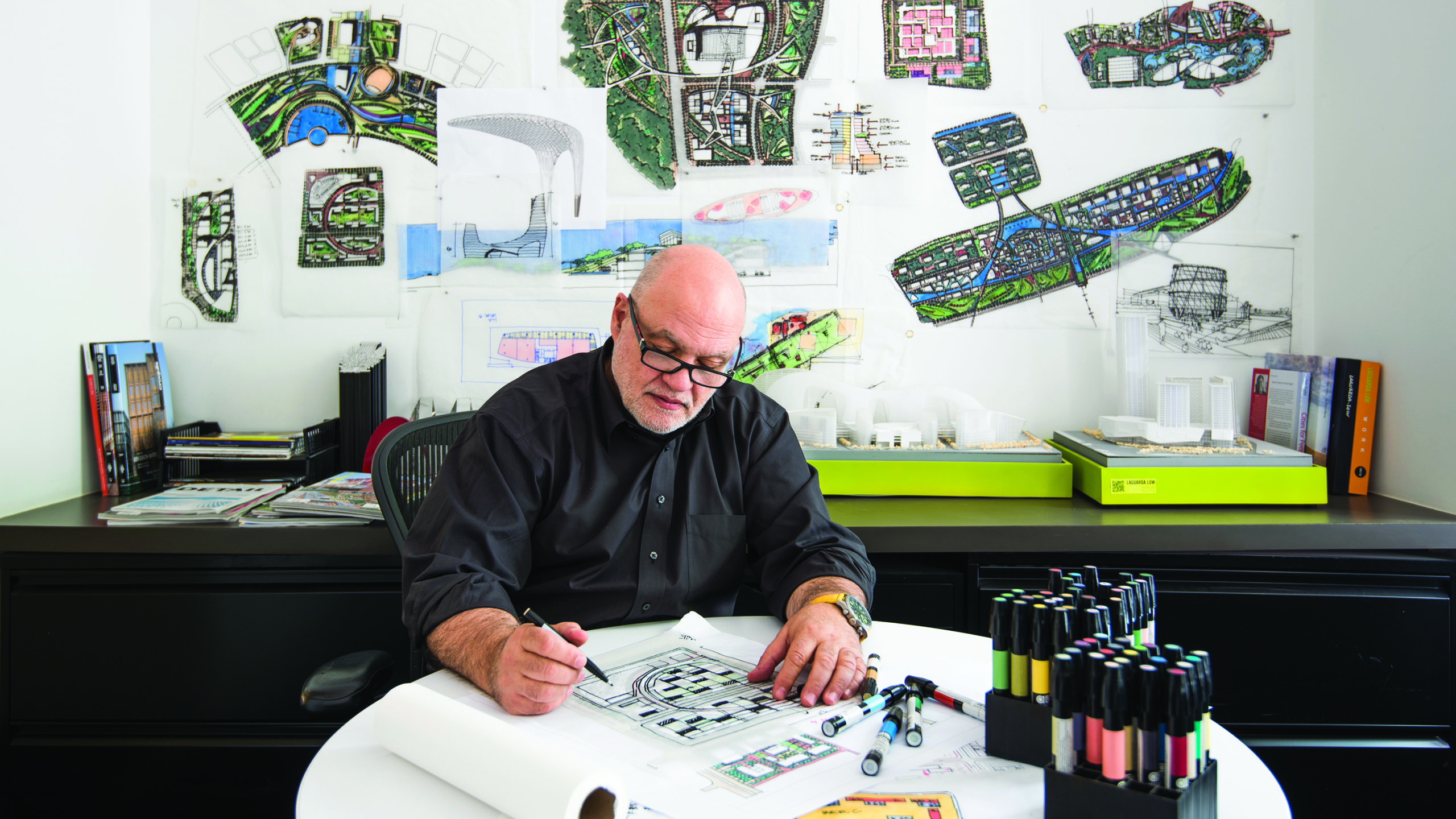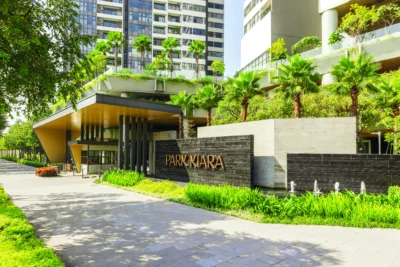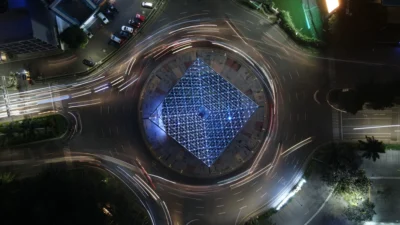Laguarda.Low Architects impresses with human-centric designs
Pablo Laguarda’s inherent verve for human-centric architecture has helped his practice Laguarda.Low make a huge impression in China and around Asia
From a young age, Pablo Laguarda knew that he wanted to help create and design better, more habitable urban environments.
“I have wanted to do this since I was a little kid. I used to build models and I always knew that I was going to be an architect,” he says. “It was something that I always pursued.”
Part of that drive came from his international upbringing. “I had the chance to travel when I was young,” recalls Laguarda. “My father was a diplomat, so we lived in Mexico, Israel, and the United States. At a very young age, I was able to go to Rome, Paris, and other great cities. I was always looking into urban environments.”
Those formative opportunities to study architecture and the overall urban planning of great cities left a life-long impression. “Why do people like to go to Europe to visit Paris or Prague? Because there are so many good things that are an intrinsic part of those places,” says Laguarda. “A lot of that is related to the human scale—the cafes, the sidewalks, that’s what we like. That’s something that has been lost in many places, including in the United States.”
After graduating with his architecture degree, Laguarda went on to become the founder and principal of Laguarda.Low Architects, a Manhattan-based firm with a truly global outlook. Since its founding in 2000, the firm has had a profound impact on some of Asia’s most culturally and financially significant metropolises.
“In the last 22 years, the transformation in China has been incredible,” says Laguarda. “Particularly the urban settings. I see cities growing from pretty much nothing.”
He points to Shenzhen in southeastern China, which has morphed from a relative backwater to an economic powerhouse and Hong Kong’s first point of contact with mainland China. “Shenzhen was a fishing town,” he says. “In 30 years, it’s grown to a city of 30 million. I’ve been witness to this transformation and it’s unbelievable.”
We always try to preserve the human scale and the contact with the natural world in our projects. We are doing a lot of new buildings where we introduce landscapes on the roof of the buildings
Yet while all this change can be thrilling, Laguarda worries that overzealous developers are forgetting what the purpose of their spaces is in the first place. “The end product always has to be focused on people. We are the scale of everything,” Laguarda says. “When you design a project, you have to consider that a person will be living and working and entertaining there.”
In particular, he notes that many of the glitzy new developments built for prestige across Asia neglect those that should inhabit them. Glittering starchitecture may look stunning, but if its creation eliminates pedestrian walkways and street life, it may take too great a toll on the societal fabric.
“A lot of the new urban design is done on a human scale to the extent that it used to be,” says Laguarda. “Spontaneous urban design done with years of experience goes away. In its place you have new skyscrapers coming up. Some of them are beautiful design statements, but they don’t do anything for the city or the urban context at the human level. They become cities where you cannot even walk from one building to the other one.”
As the firm behind some of Asia’s most ambitious large-scale, mixed-use developments, Laguarda.Low Architects strives to counter these trends. “We always try to preserve the human scale and the contact with the natural world,” he says. In a practical sense, this translates to incorporating green spaces even in the heart of commercial and residential developments, in addition to creating walkable spaces for people to congregate.
“In our projects, whenever we have the chance, we try to be sure the project is related to nature,” Laguarda says. “We are doing a lot of new buildings where we introduce landscapes on the roof of the buildings.”
Laguarda has hope that more designers will think this way in the future. Already he notes that several architects who have overseen commercial shopping centres in recent years have taken the opportunity to transform their rooftops into lush gardens. “More and more the roof is becoming a useful space for people and it offers a great possibility to utilise that for green areas,” he says.
It might seem like a small thing, but it’s indicative of a greater awareness of the need for these types of spaces. Development around Asia Pacific may continue at a breakneck pace, but Laguarda.Low Architects will continue to do its part to ensure that cities are both beautiful and vibrant places to live in the future.
OCT OH Bay Master Plan, Shenzhen

A decade after Laguarda.Low Architects first worked on a project for this client, they returned to the area to build out the commercial elements of the development on Shenzhen Bay. “This part opened in 2022, so this year or at the end of last year. It made us very proud to integrate so much greenery at this scale,” Laguarda says. Although the primary purpose of this new addition was retail, the city of Shenzhen insisted that it needed to contain a public park. Ever eager to incorporate additional foliage where possible, Laguarda was thrilled. “We mixed the two things to create a blend of park and retail project.”
Jining Cultural Center

Comprised of four sleek office and residential towers with curved sides, this addition to the Jining Cultural Center presented a unique challenge. “There were four museums in the front which were done by other architects,” he says. Laguarda.Low Architects needed to ensure that the commercial components blended seamlessly with the rest of the masterplan, without overshadowing or diminishing the museums. To unite the disparate aspects of the design, Laguarda used extensive stretches of well-manicured landscaping. “It’s like a green carpet that links the whole project giving it a much more, cohesive feel,” Laguarda says.
Vanke Chengdu

“I’m very proud of this project,” Laguarda says. This sprawling office development incorporates two levels of retail. “In this case, we tried to create a sacred garden in the center and also step down the green from the terraces,” he says. One of the challenges in making this space feel dynamic and original was the comparatively cookie-cutter office blocks next to it. To counter the “rather boring” neighbors, “we decided to create these circular forms working against each other. We wanted to create something different, so we made these two semi-circular shapes, and the garden is sunk below the street level, which adds to the experience.”
Grandberry Park, Tokyo

Located at Minami-machida Station, one of the busiest transportation hubs in Tokyo, this complex mixed-use development project had a lot of moving parts. “We elevated the retail level to one level above ground and connected this with the park directly. We wanted to create a continuous experience with the park,” he says. “The idea was to create a different sequence of plazas and places for people to stay. This is more like a neighborhood, a community center. We use different materials to create a sense of variety and scale. It’s a popular project in this area of Tokyo.”
Hongshan 6979, Shenzhen

“This was a very successful project,” Laguarda says. Centred around one of Shenzhen’s most important subway stations, Hongshan 6979 is both a cultural and transportation hub for the entire city. Laguarda.Low needed to find a way to integrate a series of ambitious retail elements, while maintaining a sense of serenity. To do that, the architects anchored it around a modern-day interpretation of a sacred garden. “It’s built around a central garden,” he says. This landscaped greenery is sunken below the earth, giving visitors a reprieve from the street-level bustle.
OCT Bay Master Plan, Shenzhen

With this sprawling, multifaceted development, the city of Shenzhen hoped to remake the waterfront on Shenzhen Bay. “The client created this artificial lake to provide a focal point for the project,” Laguarda explains. “To complement that, we created something almost like a fishing village.” Although Shenzhen is now one of China’s biggest boomtowns, it was once a comparatively sleepy area. In envisioning this project a decade ago, Laguarda wanted to help create a space that would honour Shenzhen’s history while becoming a focal point in its future. The result is a series of lakeside restaurants, cafés and shops, all of which subtly emulate the region’s traditional architecture.
The original version of this article appeared in Issue No. 173 of PropertyGuru Property Report Magazine. Write to our editors at [email protected].
Recommended
Park Kiara in Hanoi raises the bar for sustainable urban living
Park Kiara in Hanoi is a repudiation of low-density, car-dependent suburban sprawl
6 reasons Bekasi is rising as Greater Jakarta’s next hotspot
One of Greater Jakarta’s rising stars is prospering, thanks to ample recreation and a contingent of desirable housing projects
6 developments driving Asia’s green real estate shift
Developers are being incentivised to push a green agenda into daring new realms
The Philippines’ LIMA Estate drives sustainable industrial growth
LIMA Estate models a citywide vision that uplifts workers while appealing to climate-conscious employers







